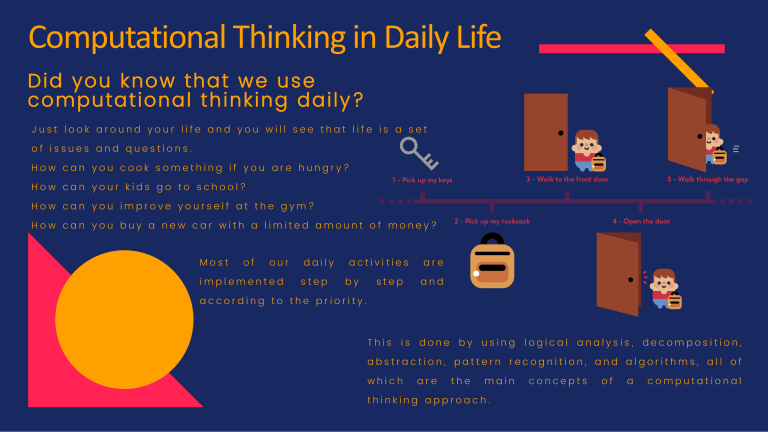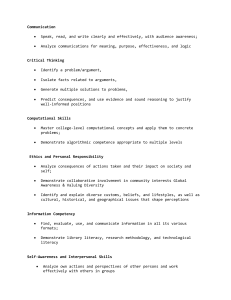
Computational Thinking in Daily Life Did you know that we use computational thinking daily? Just look around your life and you will see that life is a set of issues and questions. How can you cook something if you are hungry? How can your kids go to school? How can you improve yourself at the gym? How can you buy a new car with a limited amount of money? Most of our implemented daily step activities by step are and according to the priority. This is done by using logical analysis, decomposition, abstraction, pattern recognition, and algorithms, all of which are the main thinking approach. concepts of a computational What is the traditional computational thinking? Computational thinking is an effective learning method that is used to solve complicated problems in a smart way. Those problems could be related to computer science or to everyday life. This method can be applied by humans, smart machines, or both. This may be the first time you’ve heard about computational thinking, but if you think about how you deal with your daily issues you will probably find that you follow the four main concepts of a computational thinking approach by default. Problem: How do we use a vending machine? AB O UT O UR CO M PANY 1. Look for the code and price of the item you want to buy. 2. Insert the correct amount of money for the item. 3. Type in the code or press the button for your item. 4. Wait for the item to go down. 5. Get the item that you bought. 1.A problem is a situation, person, or thing that needs attention and needs to be dealt with or solved. 2.An instruction is a direction or order. It is a detailed information telling how something should be done, operated, or assembled. Problem: How do we use a vending machine? ALGORITHM A set of step by step instructions that solves a problem. A good Algorithm 1. Leads to completion. 2. Is accurate and unambiguous(not open to more than one interpretation). 3. Has the appropriate level of detail. 4. Has well ordered instructions. 5. Covers all possible outcomes with practical solutions. THE CIRCUS HUMANS VS. COMPUTER ALGORITHM ❖ With human algorithms we can rely on • Intuition (feeling more than conscious reasoning) • Initiative (make an action right away) • Prior knowledge • Independent decision-making • Learning from experience ❖ Computers do not have these things and therefore we must take this into account when we write the algorithm for a computer program.


